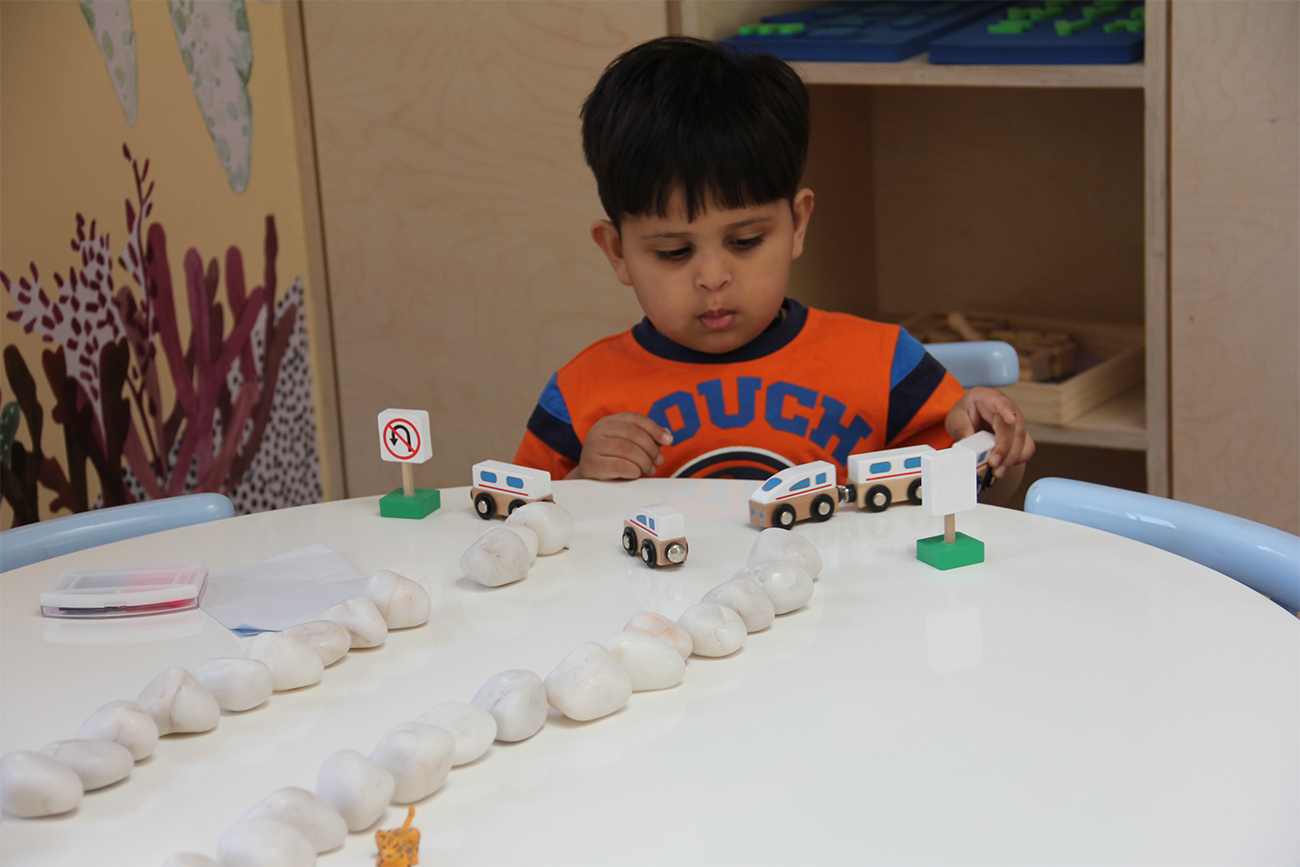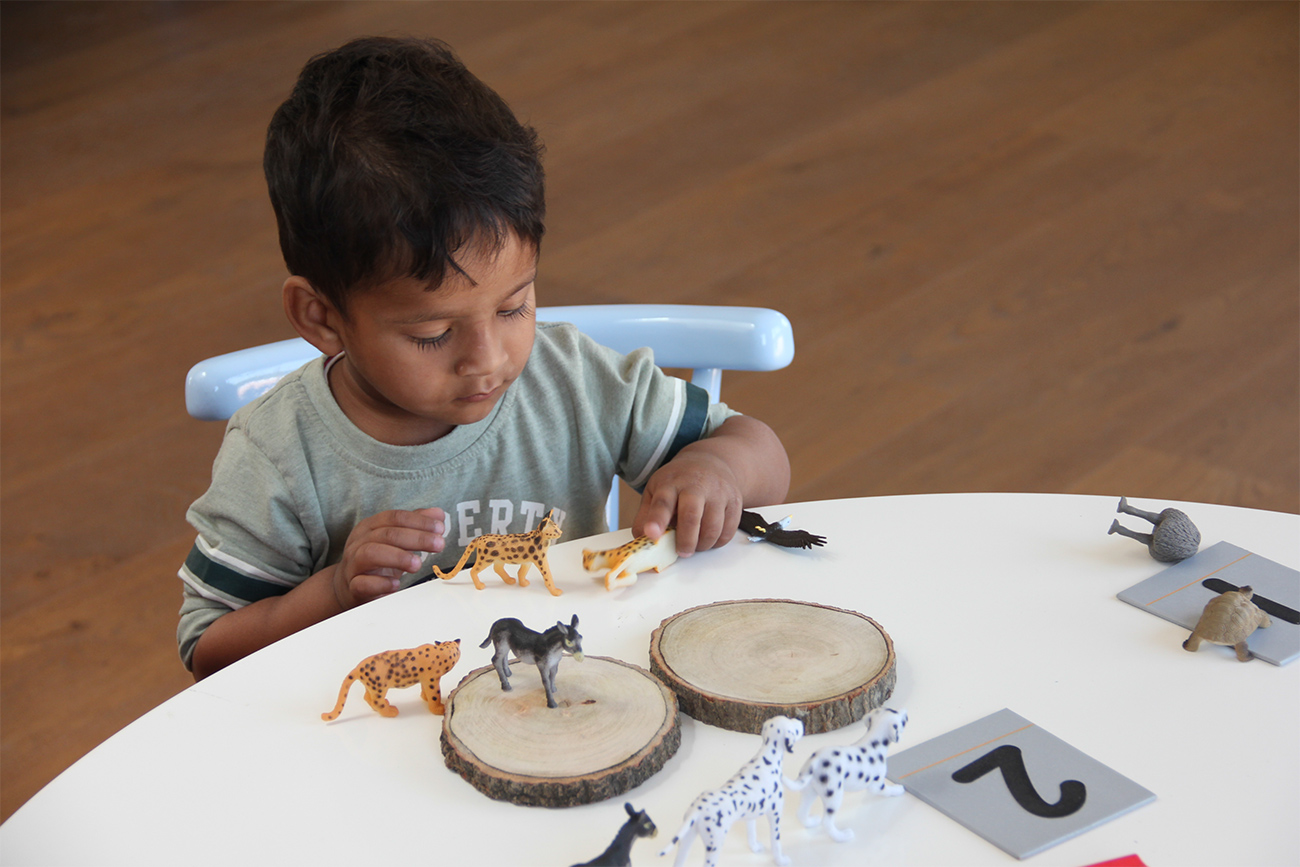14 Sep Power of Provocation in Reggio Learning (Part 2)
An Introduction
Provocation is a thoughtfully designed setup for preschool children, to invite them to acquire knowledge as they explore the designed setup through their imagination and curiosity. Provocation can be in various forms and could differ from class to class, but it has a certain purpose of inviting children to explore ideas and exercise their skills. There’s no ‘wrong outcome’ in the process of learning here, but just another perspective.
Provocation in the Reggio Emilia Pedagogy
The famous child psychologist Piaget describes the different levels of learning that take place in different age groups of childhood. He focuses on learning as a linear process happening at different stages. Moving further from this perspective, the founder of the Reggio Emilia approach, Loris Malaguzzi, establishes that the development in children happens with the complex interactions between their environment and the society, more as a group than just an individual.
Loris Malaguzzi is highly influenced by the theories of Vygotsky, on a child’s cognitive development. The child in Zone of Proximal Development (Vygotsky), shows greater improvement, understanding, and efficiency in the task completion with the guided learning of an adult than their counterparts (Piaget).
For eg: children while gazing at the sky, in the absence of a source of information to their knowledge will only be able to identify the design of stars and would understand them only as constellations; they would not know and remember their names. They would understand these constellations better when guided by an adult. This bridges the gap between their interests and their potential development with the help of a competent adult (teachers and parents).
The role of adults in the world of Provocation plays a crucial part. Teachers and parents are also provoked in the process of setting up the Provocation. Provocations can also be set up at home by parents to engage their child(ren) towards new perspectives of learning and to understand more about the capacity & capabilities of the child(ren).
Role of a teacher in Provocation
The role of a teacher in a child’s learning cannot be easily overlooked. As said by Malaguzzi, “The teachers need only to observe and listen to the children, as they continuously suggest to us what interests them”, but, they have become more of the second element of the Provocation.
Teachers design and provide Provocation to their children consisting of a number of variants; materials supplied could range from questions to photos, from instructions to prompts, answers, vocabulary, and language, and much more. With thorough observation and understanding of what would engage children through play and space for optimal learning, teachers keep a check on the mediums of learning but do not predetermine the outcome. They constantly observe, evaluate and change the setup to invite children into deeper thinking.
Teachers intervene to test their theories and observations (which again becomes an invitation for children to participate in) and improve or improvise the setup to fuel the challenging aspect of learning. But these “Interventions are carefully and specifically designed to facilitate children’s thinking, to ‘provoke’ them to go further in their thinking or to give them a facility that they need with a medium such as clay to use as a language to explore and express knowledge,” as said by Edward in The Hundred Languages of Children.
Not narrowing the possibilities of children to explore, along with their own research, teachers ensure that the learning is well-documented, followed, and not limited. This also motivates further designing of activities and questioning.
Provocation for teachers
“Provocations are not stagnated but ever-changing and informed by the thinking and ideas of both the educators and children and will involve critical reflective practice… by both.” – Joanne Marie Haynes
The concept of Provocation requires the provoking of teachers too, teachers are required to widen their understanding and explore various possibilities, rather than with just the known way of teaching and providing things to children. Teachers are equal learners in the process, constantly learning about the changing behavior of their children, trying to see the world through their eyes, feeding and generating their own curiosity. Curiosity about the interests of each child, what is the understanding or misunderstanding, expanding on a thought – opening a door to another way of thinking.
Teachers invest a great number of thoughts and planning in creating a context between what already exists and the learning that would provoke thinking; keeping in mind what exactly teachers are provoking or inviting the children for. Children are provided with free space to try what they know so the teachers can observe the impact of the set Provocation. Children are critically analyzed by their teachers to see that the Provocation set up by them is interesting, not outside of the world of knowledge of kids, adds to their existing knowledge, and how they can better it to evolve them further from where they are. So Provocation applies to the teachers too. To be able to set up an effective Provocation, teachers are required to launch discussions among themselves, hypothesize, push themselves out of their comfort zone to enable to establish effective Provocations.
Teachers have to regularly update the progress of children; discussing and analyzing their playtime together with the photos as documentation. “I think what I try to do is offer children experiences and opportunities – as I know these will invite some children to test what they already know and, at the same time, provoke new thinking in others…”, said Suzanne Axelsson, an educationalist, in her writings Interaction Imagination. She further adds that her understanding of children developed through constant engagement with them and observation. It has helped her to navigate children through activities and how these children will get experienced by these activities. However, she is always surprised by the possibilities it may propose and is always receptive “to listen to the child once more – to see how I need to react”. It also transmits to the children the feeling of assurance and safety to explore something new with trust in an adult.
Our expertise gathered over the years should not discard the possibilities presented by the imagination of the children.
How does Provocation make learning in Reggio an exceptional learning approach?
The Reggio style Provocation understands that if a child is driven towards a topic with inner interest and curiosity he/ she will make conscious and serious attempts to get more familiar with it and will remember it longer eventually. Their thirst for this ‘knowing’ is satisfied by their own efforts and teacher being a facilitator here.
Teacher arranges the setup in a way that children arrive at the learning on their own at the end of their quest. Provocations are not just arranging the learning space for children but also assigning them with small group work, where the children govern their conversation, become an active audience and expressive thinkers; thus generating a lead for new learning.
Unlimited Exploration
Being social and self-thinking individuals, children learn a lot from everywhere they happen to be like home, peers, get-togethers with relatives, friends, or families. They even learn a lot through participation in activities, going to playgrounds in the evening, visiting their friends, etc. All these learnings are carried back by them to their classrooms and are applied to their understanding. This combined knowledge that emerges from the existing knowledge and through acquired learning, urges these children to move to the next level. This happens when the teacher is observant and provides a kind of setup with complexities to take their existing knowledge a step higher with their past learnings & new observed understanding. This understanding can be further extended by the aid of the teacher through proper Provocations.
Concluding, experiential learning makes for a stronger foundation for these young ones enhancing their emotional, cognitive, and motor skills – exercising their mental and physical skills for their life.




No Comments